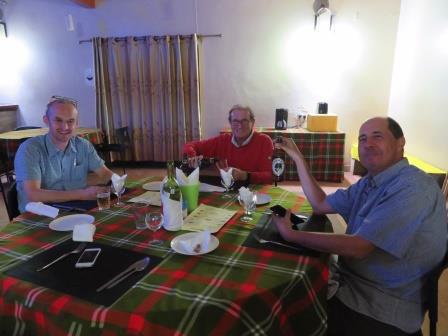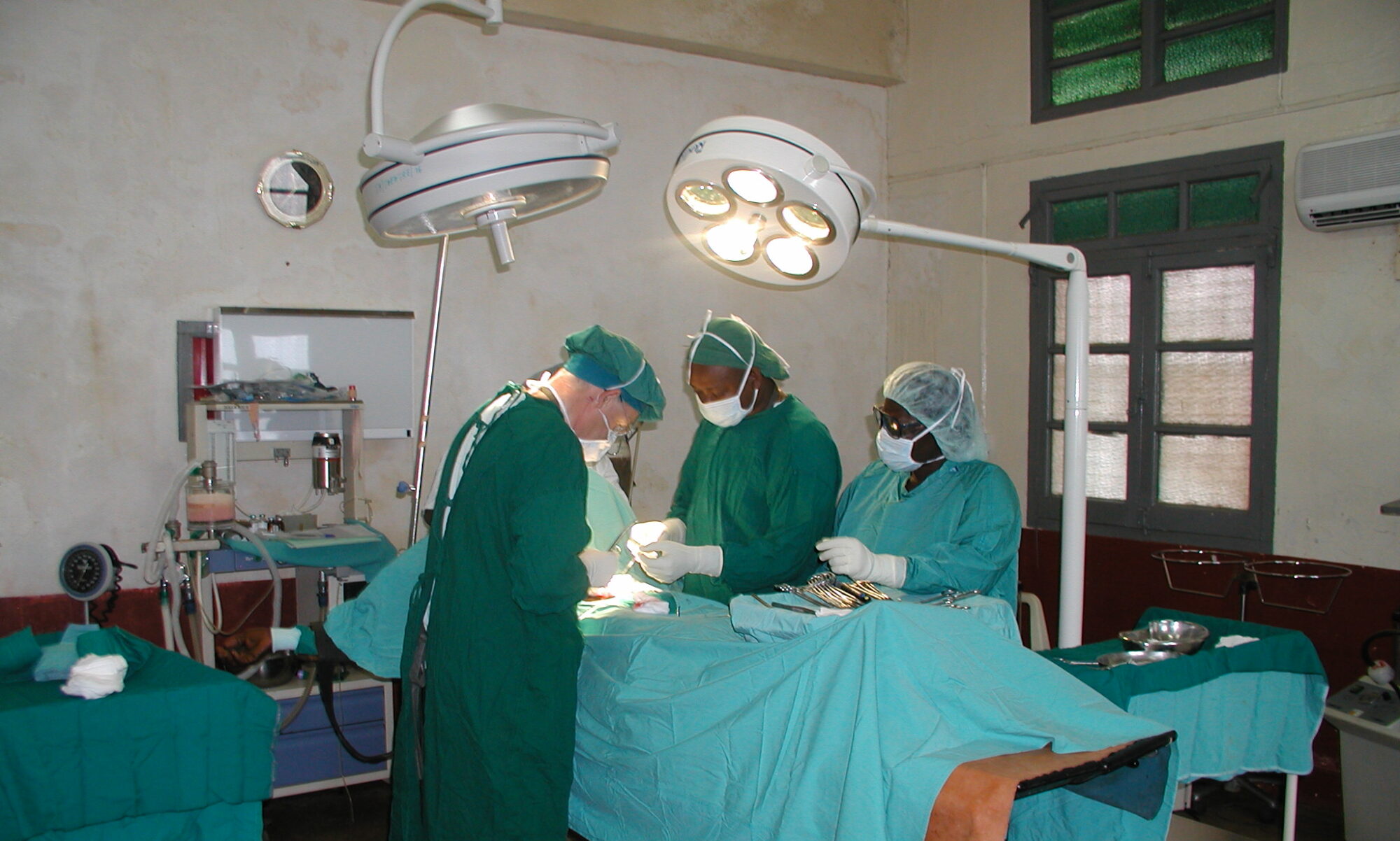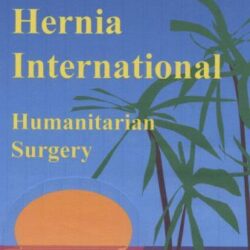GATUNDU, KENYA – NOVEMBER 2018 REPORT
The town of Gatundu, population around 20,000, is situated in the central highlands in Kiambu county. This was the 8th Hernia International mission to Gatundu Hospital and the 4th to take place in the Chinese funded and built hospital extension which was commissioned in April 2016. The mission took place between Monday 19th and Saturday 24th November 2018.
An International Team
Fernando Di Santiago Urquilo General Surgeon Spain
Jane McCue General Surgeon UK
Leo Mitteregger General Surgeon Austria (including Children)
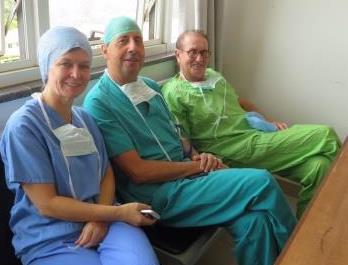
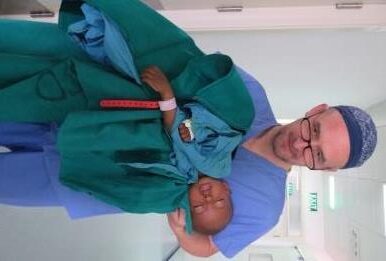
Tim Walker Anaesthetist UK
Kay Wandless Theatre Sister UK
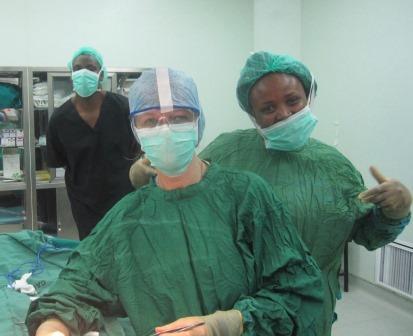
Leo is a seasoned veteran of Hernia International trips (HI). Fernando and I met Leo on our first time with HI at Farafenni in 2017 and decided to work together again. Fortunately, we were able to persuade my UK Anaesthetic colleague Tim to accompany us and felt the team was complete when Kay Wandless also decided to join us.
Preparations
It was only about eight weeks before we started that the mission was actually confirmed. Once this occurred communication with the Hospital Superintendent, Dr Simon Gitau was always prompt and helpful. He was happy to provide an official letter of invitation to help smooth any approach to the authorities.
Our team set about compiling a list of supplies to take with us. These included: sutures, diathermy accessories, spinal needles, surgical instruments, wound dressings, antiseptic products, gloves, masks, gauze, headlamps and 2 portable monitor/pulse oximeters. 20 sterilised meshes were provided by HI and a large quantity of unsterilized mesh with instructions for sterilisation to take place at Gatundu Hospital. Leo organised a fundraising event in Austria and consequently purchased a large supply of quality surgical instruments. I visited a healthcare company in the UK and they were kind enough to donate a range of infection prevention products. All other supplies were provided by the individual team members, or with permission, from their own employers.
On previous missions we have taken medication with us but having read of the difficulty encountered by a previous team at Nairobi airport and knowing of the Kenyan government clampdown on counterfeit goods I was keen to obtain permission before we travelled. Disappointingly, repeated attempts to gain approval with the Kenya Embassy in the UK, the Pharmacy and Poisons Board in Nairobi and even the British Embassy in Kenya were unsuccessful. Fortunately obtaining our e-visas was much more efficient.
Sadly, and to the disappointment of everyone , just two days before our departure Kay fell down stairs and sustained a fracture which meant that she was unable to accompany us. Some last minute rearrangements did enable us to take the supplies she had gathered with us.
Our Journey
Tim and I flew direct from London to Nairobi on British Airways and met Leo who had travelled on Kenya Airways via Paris. We all used our full 46kg baggage allowance (plus hand luggage) but encountered no real difficulties at any of the airports except that one of Leo’s cases (the one with his clothes in!) was delayed by 24 hours. Cyrus who was our driver for the week, provided by the hospital, was waiting for us with his jeep.
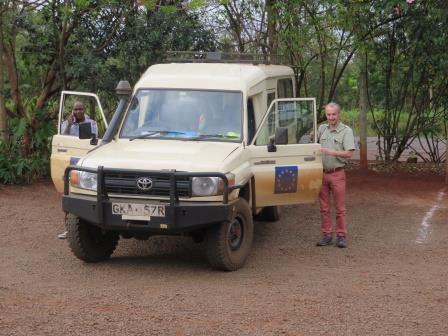
Fernando was due to arrive the following morning and I was a little concernedwhen after waiting some hours he had yet to appear and was uncontactable. The thought of losing two team members in two days was concerning. What had actually happened is that the flight arrived early and on emerging from the terminal with the words Hernia International emblazoned on his case an enterprising local woman announced to him that she was his driver and was going to take him to his hotel!
The Morning Commute
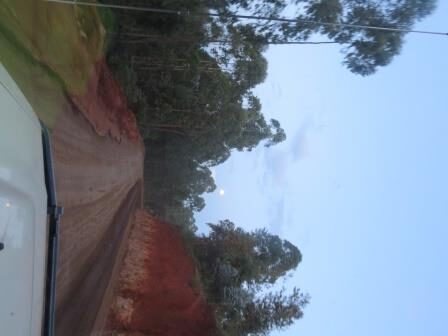
Each morning at 7.30 our trusty driver Cyrus arrived to transport us to the hospital which was about 25 minutes away. The journey itself was a real highlight as we drove up through fertile farmland and beautiful lush rainforest. It also enabled us to see the conditions in many of the villages we passed through which was a contrast to much of Nairobi. We were stopped at a police roadblock one morning but when the Inspector realised our business he saluted us!
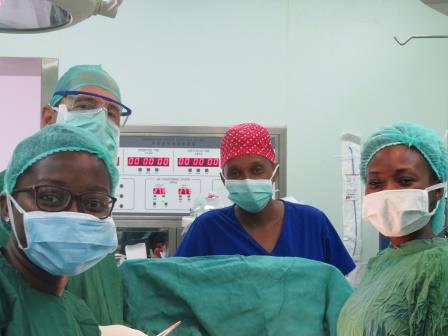
The Surgical Facilities
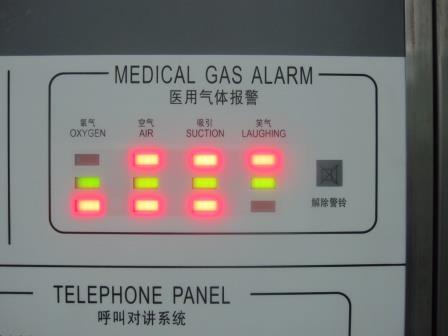
At first glance the facilities look far superior to those in many hospitals where HI operates but the Chinese left without any handover to the Kenyan staff. Not yet open for two years the building is already showing signs of age and there are many systems that have either never functioned or have broken cannot be maintained by the staff. We unpacked our supplies on the Monday morning in the room we had been allocated. Stupidly, I had left the key to my own case at home but ultimately I managed to break into it and remove all the supplies. We used two wards, one for the men and the other for both women and children . Patients were admitted to the ward the night before the procedure as many had travelled from a distance.
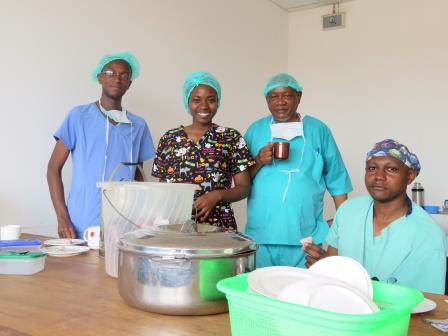
Both operating theatres were spacious. Reading through past HI reports you can see that things have improved in Gatundu theatres in the past two years. There was a constant supply of electricity, both diathermy machines were working and the operating lights were sufficiently good to operate without headlamps even though only one out of two lights were functional in each theatre. Anaesthetically it was more challenging as most piped gases were not working.The recovery facilities were basic. It was essentially a room across the corridor from the theatres where you could plug in a portable monitor but without suction and frequently unattended by staff.
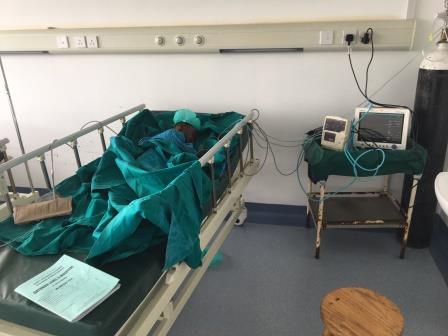
Daily Routine
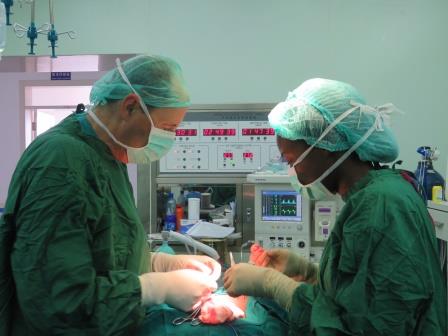
We rapidly settled into a daily routine arriving at the hospital around 8am to complete the assessment and marking of the pre-operative patients, to review the previous days post-operative patients and then start operating between 9-9.30am. We operated all day and before leaving the hospital checked the patients we had operated on and started the assessment on the next day’s patients. Most pre-operative assessment were carried out by Tim and Jane.The day in theatre was briefly interrupted for chai and arrowroot around 11am and then lunch around 1.30pm. Lunch was delicious and usually beef stew or ginger chicken with rice, chapattis, coleslaw with bananas to finish.
On Friday, our last day of operating we arrived in the hospital to find out that the entire operating suite was locked and the single access card locked inside. A lengthy delay ensued and it was only thanks to Tim’s ingenuity that we were able to access a computer with operating instructions largely in Chinese to programme a new card!
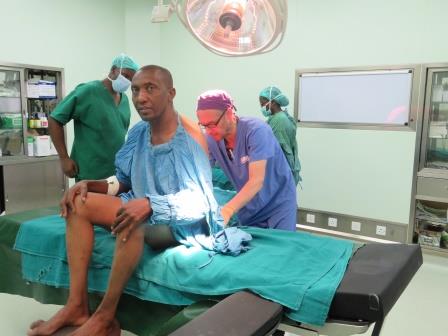
The Staff
The staff were great and a pleasure to work with. All had volunteered to participate in the mission on days when they were not scheduled to be working. They were uniformly friendly and willing to work hard.
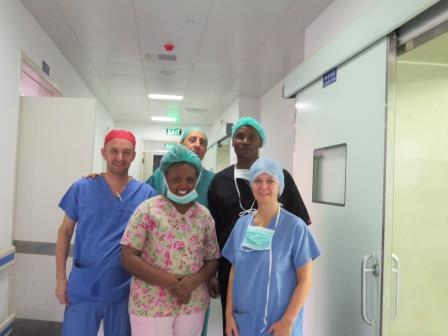
Ruth led a team of non-medical anaesthetists and each day whilst Tim was busy in one theatre the anaesthetics in the other theatre, spinal or general, were capably administered by one of the team.Weru was the nurse in charge of the paediatric theatre and David the adult theatre. They and their teams rapidly adapted to working with us. We were fortunate to have two medical interns, Fionah and Roy and a physician assistant assigned to us for the week. All were bright and enthusiastic and it was good to work with and teach them. The two ward sisters were experienced and there was some continuity throughout the week as one attended the paediatric rounds and the other, Mary, accompanied me on the adult rounds.
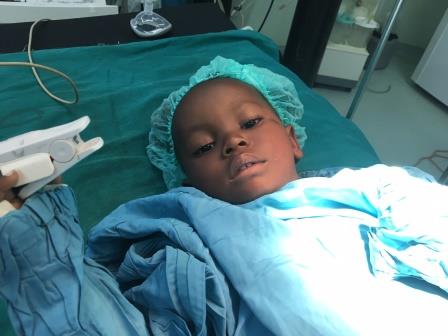
Case Mix
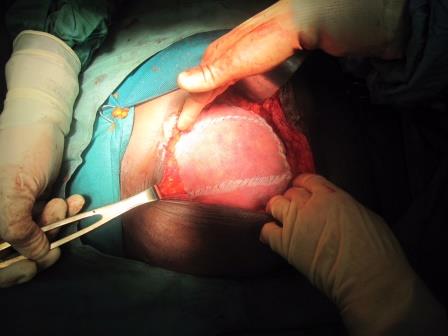
The cases had been screened and selected by the local junior doctors. Regrettably around four patients with hiatus hernia had been scheduled for a Nissan’s procedure. None of the team felt this was appropriate given the facilities and so these patients were cancelled. Another three patients were cancelled – two boys with undescended testes who need further scanning as there was no palpable testis in the groin and one adult patient who had a significant thrombocytopaenia. All the remaining patients who had been recruited were operated on. Most patients spoke English which made consenting easier than in some other HI locations. In total 55 surgical procedures were performed on 48 patients. All bar two of the paediatric procedures were performed by Leo whilst Fernando and I shared the adult cases.
| Surgical Procedures | |||
| Adult | Child | ||
| Inguinal hernioplasty (of which 1 recurrent) | 11 | Umbilical herniorrhaphy | 16 |
| Incisional hernioplasty | 4 | Orchidopexy | 9 |
| Epigastric hernioplasty | 4 | Inguinal herniotomy | 3 |
| Para/Umbilical hernioplasty | 3 | ||
| Femoral hernioplasty | 1 | ||
| Jaboulay procedure (hydrocele) | 3 | ||
| Excision of giant lipoma | 1 | ||
| Total | 27 | 28 |
The case mix varied somewhat from other missions in that there were more obese patients and a higher proportion of incisional hernias, one of which was huge and required the suturing together of several meshes. One histopathology specimen was processed by a colleague of Fernando in Spain, as the patient was unable to afford for this for this be done in Kenya. Luckily, considering the excised specimen contained some suspicious elements, the report was benign.
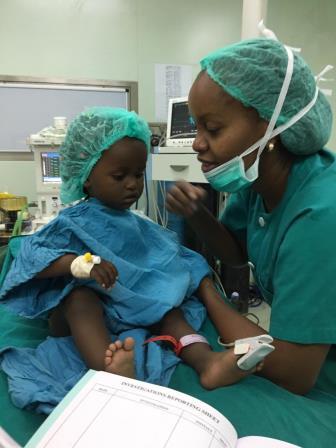
There were no returns to theatre and all patients were discharged promptly at the expected time. The final patient review took place on the morning of Saturday 24th November and no short-term complications had been detected by this time.
During the week we were also asked to see two neonatal patients. One baby had gastroschisis and after implementing the initial advice we gave the baby was transferred to the Children’s hospital in Nairobi for definitive treatment. The other baby who appeared to have a congenital syndrome which would present anaesthetic difficulties along with an inguinal hernia was also for referral to the same hospital.
Education
As we were a small team running two theatres our educational effort was not delivered formally but during our clinical activity and focussed on the following areas:
· Upskilling the staff about pre-operative preparation
· Establishing the WHO checklist in theatre for every case
· Updating the non-medical anaesthetic staff· Teaching basic surgical skills to the junior doctors
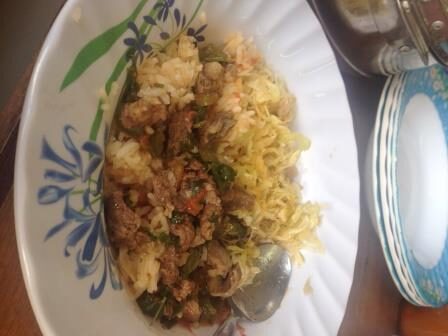
Issues
· There needs to be clarity of expectation over case mix which should be confirmed ahead of each mission.
· Whilst there was a large volume of supplies left from two previous hernia camps which may have been useful it was kept is a state of complete disorganisation and at risk of expiry before use. If we had been at full complement in our team we could have made progress on this area.
· Unfortunately, attempts to sterilise the mesh at Gatundu were unsuccessful probably due to a lack of calibration of the autoclaves which rendered the temperature control unreliable and alternative arrangements will need to continue.
· There appears to have been no handover process from the Chinese contractors to the Kenya staff. As a result there are systems in the hospital that have never worked and there seems to be no effective maintenance programme.
Accommodation
We stayed at Bubbles Hotel between Thika and Gatundu about an hour’s drive from Nairobi. There are eight recently built en-suite rooms situated in lovely gardens and surrounded by coffee plantations. There is a bar, restaurant and swimming pool and they took security seriously. All the food is cooked freshly which meant that whilst it was of a good quality it did take a while to arrive. We got around this problem by ordering off the dinner menu at breakfast time and then saying what time we wanted to eat that evening. The staff were incredibly friendly and really wanted us to have a good time during our stay, so much so that on our last night there they treated us to an African BBQ feast. We sat out late, warmed by a brazier, eating far too much and drinking African “wine” a very palatable, but potent, mix of alcoholic fruit juice and honey. We looked forward to getting “home” in the evening (and the cold Tusker that was waiting for us). The hotel is good value and we would strongly recommend that future teams stay here.
On Saturday 24th we departed for Nairobi with a short stop at Thika waterfall on route. Nairobi is a vibrant, and in parts, affluent city. The Nairobi National park was well worth a visit – even in the rain! Those who were able to stay a little longer travelled to Lake Naivasha for one night. What we saw of Kenya really was beautiful.
Summary
It is well worth continuing the link with Gatundu Hospital. The arrangements worked well, the staff were very willing, friendly and hard-working and the patients extremely grateful. We were sad to say goodbye. This is a good place for someone embarking on their first trip with Hernia International.
